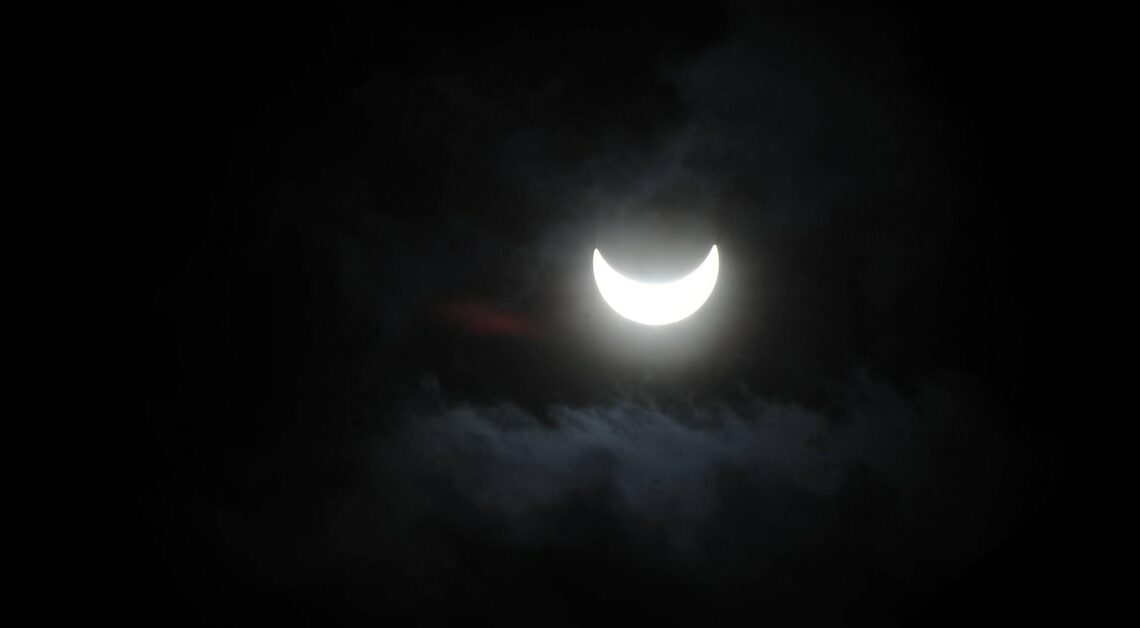
A solar eclipse is an impressive event. For a long time, people had no explanation for this unusual phenomenon. Today, the origin of the spectacle is no longer a secret. We explain how the celestial bodies have to be positioned so that the sun is obscured.
The formation of a solar eclipse
The solar eclipse was and still is a tremendous phenomenon in the sky.
- You could hide the moon in the sun about 400 times. The sun is almost 400 times bigger than the moon, even though both look about the same size in the sky. The reason for this is the different distances from the earth. The distance to the moon is about 400 times shorter than the sun.
- The moon orbits the earth, the earth orbits the sun. When the moon moves between the sun and the earth in its orbit, it blocks our view of the sun. If the moon covers the sun completely, a total solar eclipse occurs. If it does not cover the sun completely, this is called an annular solar eclipse.
- The difference between the two phenomena lies in the orbit of the moon. This orbit is not circular – it is elliptical. The distance of the moon from our earth fluctuates over the course of a year. At the point closest to the earth, the distance is 356,400 kilometers. At the furthest point, it is over 50,000 kilometers further, namely 406,700 kilometers. This is also the reason why the moon not only sometimes appears to be a little closer and sometimes a little further away from the earth, but also is.
- If the Earth's moon is very close to the sun, the sun can be completely obscured by the moon. However, the corona, the sun's halo, can still be seen. This halo of rays from the sun is the sun's atmosphere. During a solar eclipse, this appears as a very bright halo of rays around the moon. The corona consists of hot gas. It can only be seen when there is a solar eclipse. The corona is not visible to the naked eye. The sun's glaring light shines over the corona and makes it invisible to you.
- The phenomenon of a total solar eclipse is not uncommon. It is just not always visible everywhere. The last solar eclipse in southern Germany was in 1999. The next one will not be visible in southwest Germany until 2081.
- A very important note: Never watch a solar eclipse without wearing eye protection. There are glasses specially made for this purpose.
Annular and partial solar eclipse
The moon does not always manage to completely cover the sun.
- If the moon is further away from the earth, it appears smaller than the sun from the earth. This means that the moon cannot completely cover the sun. This is when what is known as an annular solar eclipse occurs. This is a special type of total solar eclipse.
- But there is another type of solar eclipse. In addition to the two types of solar eclipse mentioned above, there is also a partial solar eclipse to marvel at in the sky. Here, the following happens: The moon is not in a direct line between the earth and the sun. This means that only part of the sun is covered.
Also of interest to you:
- Photographing the sun – what you should keep in mind
- Taking photos in backlight: How to get the shot
